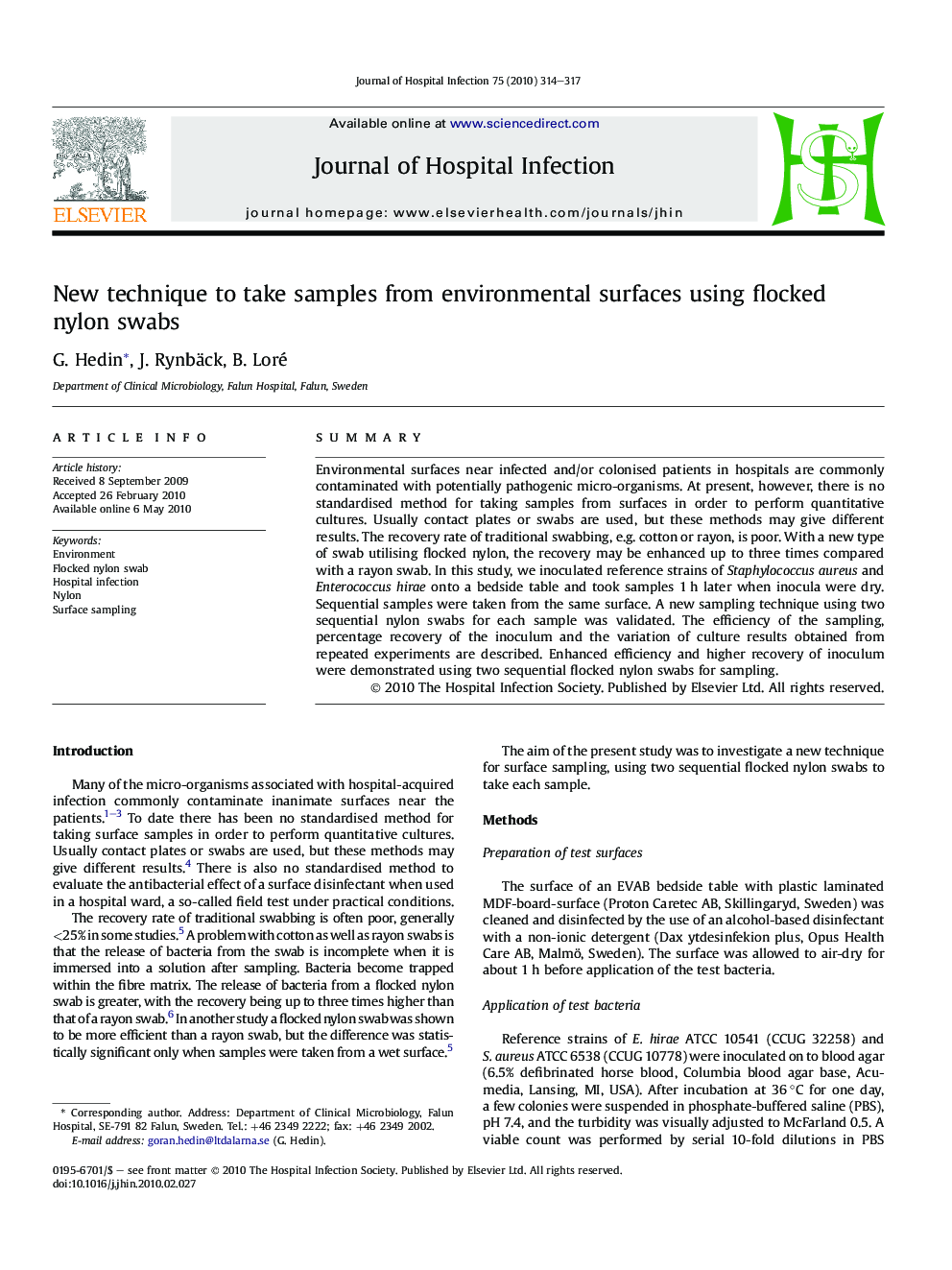| Article ID | Journal | Published Year | Pages | File Type |
|---|---|---|---|---|
| 3372710 | Journal of Hospital Infection | 2010 | 4 Pages |
SummaryEnvironmental surfaces near infected and/or colonised patients in hospitals are commonly contaminated with potentially pathogenic micro-organisms. At present, however, there is no standardised method for taking samples from surfaces in order to perform quantitative cultures. Usually contact plates or swabs are used, but these methods may give different results. The recovery rate of traditional swabbing, e.g. cotton or rayon, is poor. With a new type of swab utilising flocked nylon, the recovery may be enhanced up to three times compared with a rayon swab. In this study, we inoculated reference strains of Staphylococcus aureus and Enterococcus hirae onto a bedside table and took samples 1 h later when inocula were dry. Sequential samples were taken from the same surface. A new sampling technique using two sequential nylon swabs for each sample was validated. The efficiency of the sampling, percentage recovery of the inoculum and the variation of culture results obtained from repeated experiments are described. Enhanced efficiency and higher recovery of inoculum were demonstrated using two sequential flocked nylon swabs for sampling.
